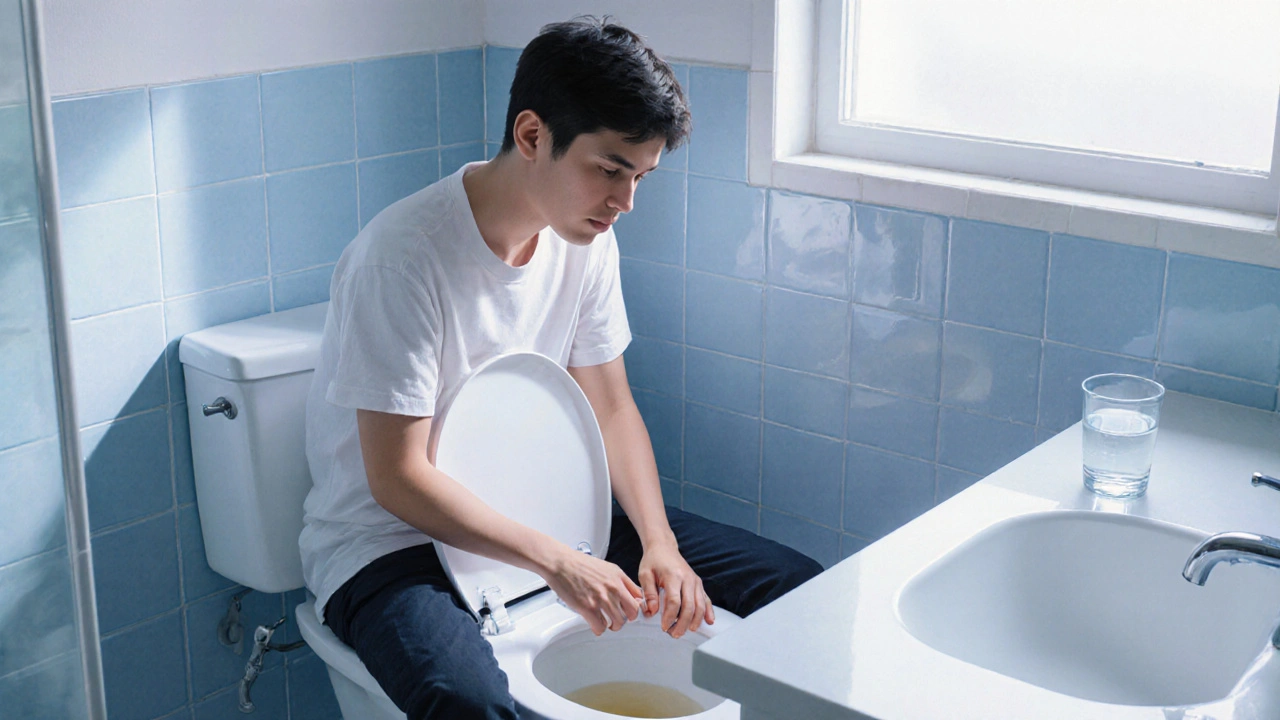If you’ve ever felt a sudden urge to pee that hits like a wave, you’ve probably experienced a bladder spasm. It’s the bladder’s way of contracting involuntarily, and it can be uncomfortable, embarrassing, or even painful. The good news? Most people can manage the symptoms with simple lifestyle tweaks and, when needed, short‑term medication.
Several everyday factors can set off a spasm. Caffeine and alcohol are the usual suspects – they irritate the bladder lining and make it contract more often. Dehydration can also backfire; a concentrated urine can irritate the bladder walls. Certain foods like spicy dishes, citrus, or artificial sweeteners can have the same effect for some folks. Infections, kidney stones, or an enlarged prostate are medical reasons that should be ruled out by a doctor.
First, try the “double‑void” technique: go to the bathroom, empty as much as you can, wait a few minutes, then try again. This helps empty any leftover urine that might be triggering the muscle. Heat can relax the bladder, so a warm sitz bath or a heating pad on a low setting can bring relief. Over‑the‑counter options like phenazopyridine mask pain, while anticholinergic pills such as oxybutynin reduce the frequency of contractions. Always talk to a pharmacist or doctor before starting any medication.
Diet changes are a simple, cost‑free way to help. Swap coffee for herbal tea, cut back on soda, and aim for at least eight glasses of water a day. Adding magnesium‑rich foods like leafy greens or nuts may ease muscle cramps, including those in the bladder. If you’re prone to nighttime trips, try to limit fluid intake after dinner and avoid bladder‑irritating snacks before bed.
Pelvic‑floor exercises (Kegels) strengthen the muscles that control urine flow. Start by tightening the muscles you’d use to stop a stream, hold for five seconds, then release. Do three sets of ten each day. Consistency is key – you’ll notice a calmer bladder after a few weeks.
Stress plays a bigger role than many realize. When you’re anxious, the body releases hormones that can cause the bladder to tighten. Simple breathing exercises, short walks, or a few minutes of meditation can lower stress hormones and, in turn, reduce spasm frequency.
If symptoms persist for more than a few weeks, or you notice blood in your urine, fever, or pain that doesn’t ease, schedule a doctor’s appointment. Tests like a urinalysis, ultrasound, or cystoscopy can pinpoint hidden infections, stones, or structural issues that need targeted treatment.
In some cases, doctors may suggest Botox injections into the bladder wall. This sounds scary, but the procedure temporarily blocks the nerves that cause spasms, giving relief for several months. It’s usually reserved for people who haven’t responded to meds or lifestyle changes.
Bottom line: bladder spasms are common, and most can be tamed with a mix of hydration, diet tweaks, pelvic‑floor work, and, if needed, medication. Keep track of what foods or drinks trigger you, stay active, and don’t ignore warning signs. With the right approach, you’ll regain control and cut down those unexpected trips to the bathroom.

Learn how dehydration concentrates urine, irritates the bladder, and triggers spasms. Get practical hydration tips, risk tables, and guidance on when to seek medical help.